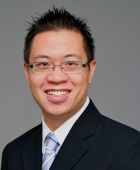Ian Y. Wong
Beyond 2D: Self-Organizing Patterns in Nanomaterials and Cancer
Biologically-inspired materials can be engineered with dynamic, information-rich functionality to manipulate molecular transport and elucidate cancer biology. In this seminar, I will present recent results from my group to pattern 2D material coatings and understand the epithelial-mesenchymal transition in cancer. First, we utilize mechanical deformations to wrinkle and crumple graphene oxide membranes into hierarchical architectures. We find that sequences of mechanical deformations generate unique structural features, suggestive of a mechanically encoded memory. These ultrastretchable coatings exhibit outstanding chemical resistance and may be utilized for smart fabrics and soft devices. Second, we investigate how mammary epithelial cells transition from a fluid-like “unjammed” phase to a solid-like “jammed” phase. We show that these collective behaviors exhibit striking analogies with a gelation-like mechanism during the diffusion limited aggregation of non-living colloidal particles. Finally, we analyze the disorganization and dissemination of multicellular clusters cultured in 3D matrix, which exhibit both collective and individual invasion phenotypes with distinct topological and traction signatures. These emergent phenomena in living and non-living systems exhibit striking analogies, which may enable new fundamental insights into the morphogenesis of tissues and tumors, as well as unconventional fabrication strategies to pattern nanomaterials.
Bio
Ian Wong engineers new miniaturized technologies based on BioMEMS and microfluidics to investigate cancer cell invasion, drug resistance, and heterogeneity. He is also interested in the unconventional fabrication of bio and nano materials using self-assembly and 3D printing. He received his A.B. magna cum laude in Applied Mathematics from Harvard University and Ph.D. in Materials Science & Engineering at Stanford University. He subsequently completed postdoctoral training with Mehmet Toner and Daniel Irimia at the Center for Engineering in Medicine at Massachusetts General Hospital. He is currently an assistant professor of engineering and pathology at Brown University. He has been recognized with an NSF Graduate Research Fellowship, a Damon Runyon Cancer Research Fellowship, the Brown University Pierrepont Award for Outstanding Advising, and as a Lab on a Chip Emerging Investigator.
Wednesday, October 20, 2021
- Time: 11:30 AM
- Location: ZOOM Link
- Seminar Flyer

Ian Y. Wong
Assistant Professor
Biomedical Engineering
Brown University